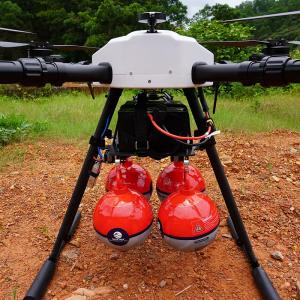Product Background
Technological progress lays the foundation: In recent years, the performance of key components such as the flight control system, power system, and sensors of unmanned aerial vehicles has significantly improved. The communication technology, satellite positioning technology, and intelligent navigation technology for unmanned aerial vehicles have also been continuously developed, providing a strong guarantee for the 15-kilogram professional unmanned aerial vehicle, which has significantly enhanced its endurance, payload capacity, and wind resistance capabilities, enabling it to execute freight tasks more stably.
Logistics demand drives development: With the rise of e-commerce, the logistics demand is increasing day by day. Traditional logistics methods have many problems in terms of efficiency, cost, and environment, especially in logistics distribution in remote areas, which is costly and has low efficiency. Unmanned aerial vehicle freight transportation, with its fast, efficient, and low-cost characteristics, meets the market's demand for logistics distribution. The 15-kilogram payload capacity can transport various materials such as oxygen cylinders, and is suitable for various logistics scenarios.
Policy support provides guarantees: Governments of various countries have gradually introduced relevant policies to support the development of drone freight transportation, while strengthening industry regulations to ensure safe operation. For instance, the State Council of China issued the "Guiding Opinions on Promoting the Development of General Aviation Industry", proposing to accelerate the development of drone freight transportation and improve the policy and legal system for drone freight transportation, creating a favorable policy environment for the development of 15-kilogram professional drone freight aircraft.
Specific scenarios drive demand: In some special scenarios, such as mountain climbing in high-altitude areas, emergency rescue, and environmental protection actions, there are high requirements for the timeliness and flexibility of material transportation. Take mountain climbing as an example, Sherpa guides usually spend about 6-8 hours crossing the Kunbu icefall, carrying a maximum load of 15 kilograms each time, and are prone to danger. However, 15-kilogram freight drones can complete the transportation of the same load of materials in a short time, greatly improving transportation efficiency and ensuring personnel safety. Therefore, such drones emerged and developed accordingly.
Product Background










